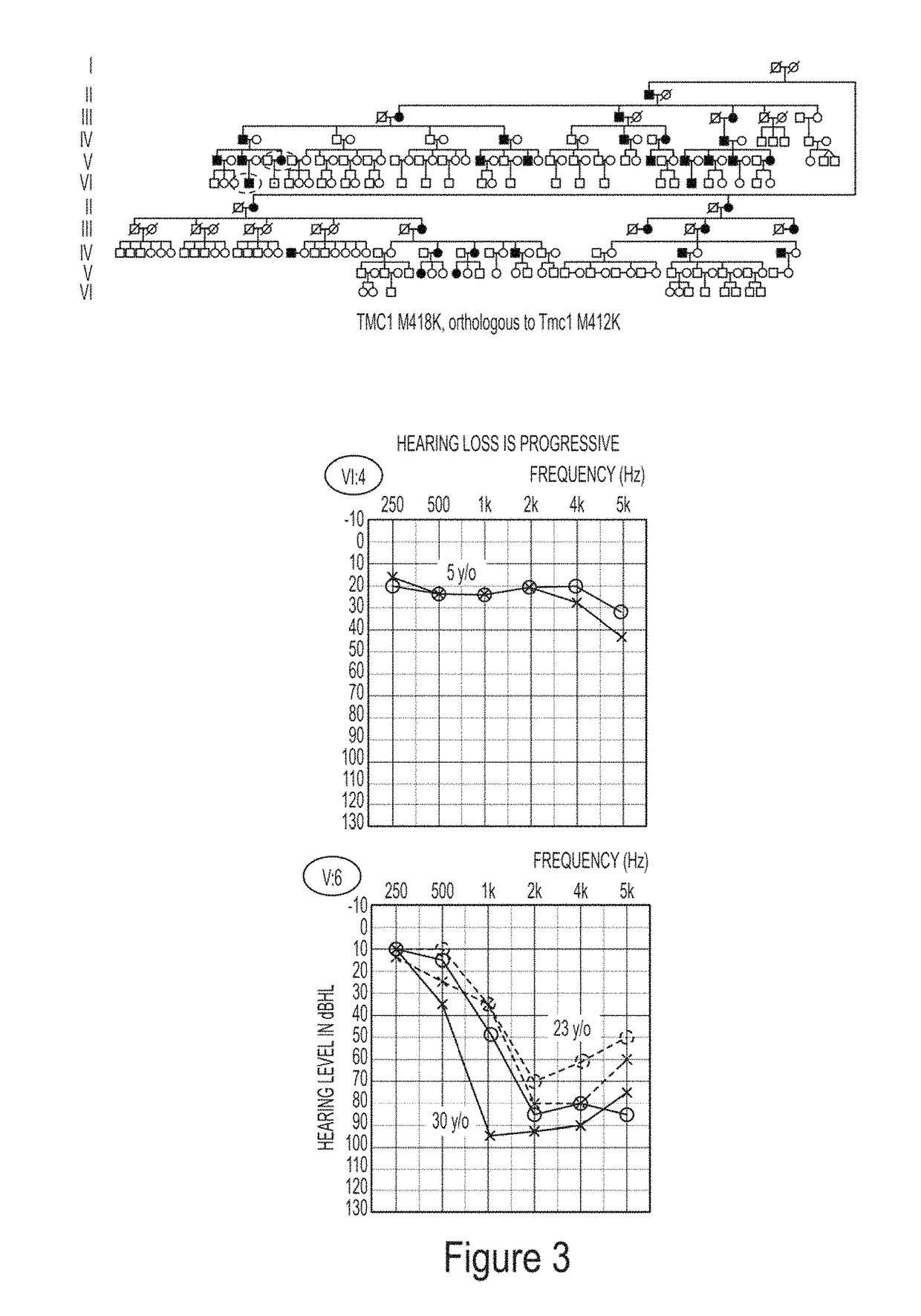Methods to prevent and treat autosomal dominant non-syndromic hearing loss
a non-syndromic, conductive hearing technology, applied in the direction of biochemistry equipment and processes, organic active ingredients, biochemical instruments and processes, etc., can solve the problems of incomplete characterization of genes and contribute to hearing loss
- Summary
- Abstract
- Description
- Claims
- Application Information
AI Technical Summary
Benefits of technology
Problems solved by technology
Method used
Image
Examples
example 1
[0175]This invention relates to a method of using allele-specific RNA interference to decrease the rate of hearing loss. The overriding hypothesis is that allele-specific RNAi-mediated gene therapy can prevent progressive Autosomal Dominant Non-Syndromic Hearing Loss (ADNSHL). miRNAs have been identified to selectively knock-down deafness-causing genes (FIG. 1). The miRNAs can be delivered to the inner ear cells a number of different ways, including intravenously and directly into the inner ear.
[0176]The process of generating and identifying the relevant miRNA is as follows:[0177]1. Mutation in specific deafness-causing gene is identified,[0178]2. Mutated nucleotide and flanking normal nucleotides on either side of mutated nucleotide is tested as microRNAs for potency to suppress expression of mutant gene (predictions can be made using computer algorithms but in vitro must also be done),[0179]3. The best in vitro miRNA is used to make a mutation-specific miRNA. This miRNA is specifi...
example 2
[0184]Hearing impairment is the most common sensory deficit, affecting more than 250 million people worldwide and broadly impacting their quality of life. Not only does it limit the ability to interpret speech sounds leading to delayed language acquisition in infancy, but in adulthood hearing impairment can lead to economic disadvantage, social isolation and stigmatization. Current treatment options focus on hearing aids and cochlear implants to bypass the biologic deficit by amplifying sounds (hearing aids) or to encode them as electrical impulses that are transmitted to the auditory nerve by an implanted electrode array (cochlear implant). While these two habilitation options are extremely effective, they do not restore “normal” hearing.
[0185]The recent adoption of comprehensive genetic testing platforms in the assessment of hearing impairment has highlighted the extreme heterogeneity of hereditary hearing loss and its broad prevalence. With an overall diagnostic rate of about 40%...
PUM
| Property | Measurement | Unit |
|---|---|---|
| size | aaaaa | aaaaa |
| diameter | aaaaa | aaaaa |
| frequency glides | aaaaa | aaaaa |
Abstract
Description
Claims
Application Information
 Login to View More
Login to View More - R&D
- Intellectual Property
- Life Sciences
- Materials
- Tech Scout
- Unparalleled Data Quality
- Higher Quality Content
- 60% Fewer Hallucinations
Browse by: Latest US Patents, China's latest patents, Technical Efficacy Thesaurus, Application Domain, Technology Topic, Popular Technical Reports.
© 2025 PatSnap. All rights reserved.Legal|Privacy policy|Modern Slavery Act Transparency Statement|Sitemap|About US| Contact US: help@patsnap.com



